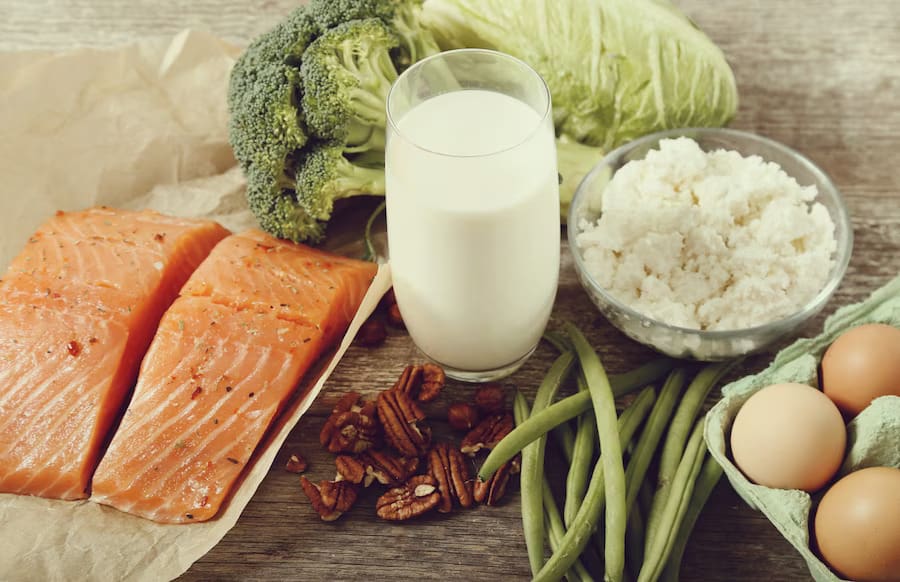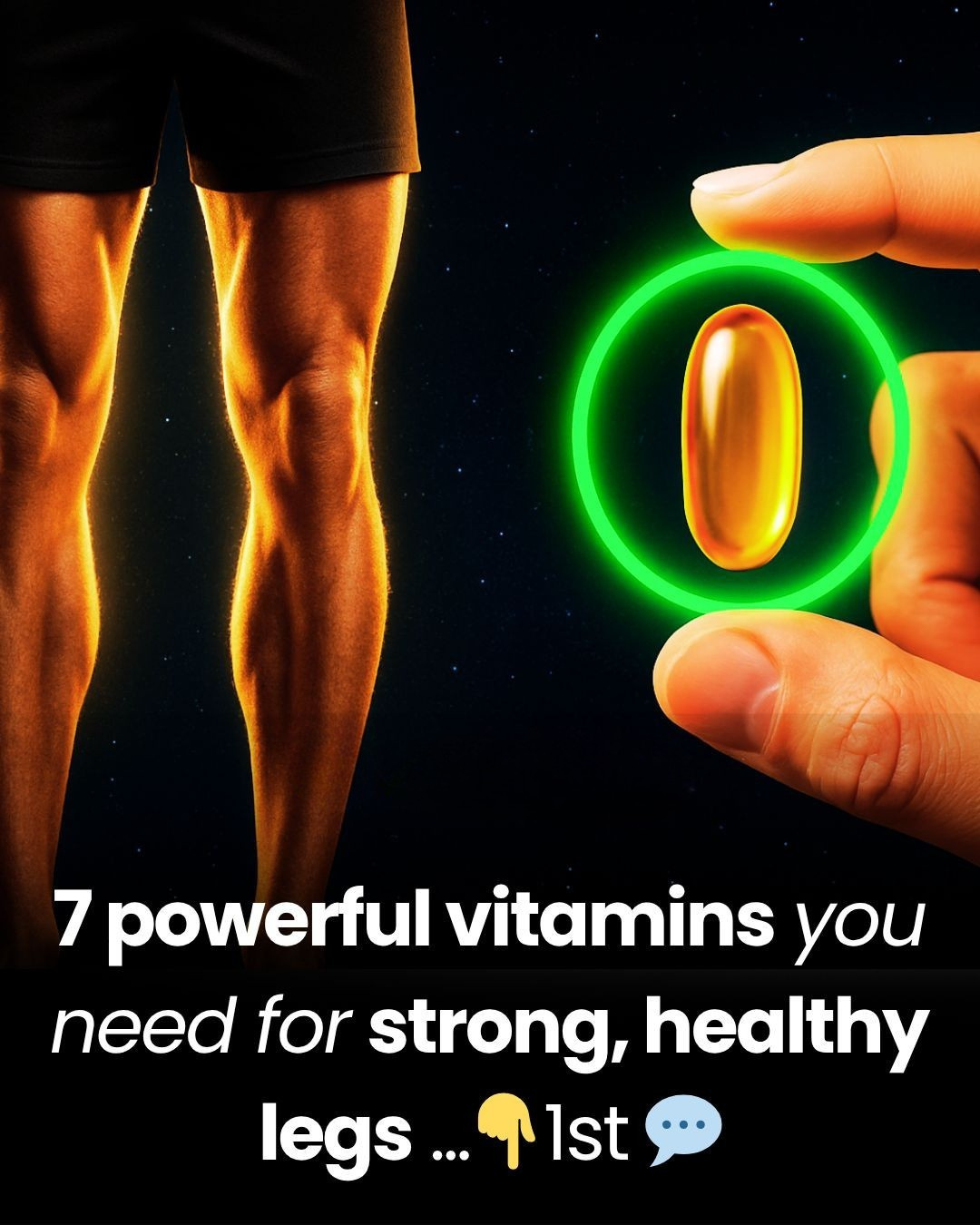Legs do more than just get you from point A to B — they’re your foundation for independence. If stairs feel steeper or you’ve been getting annoying nighttime cramps, you’re not alone. But here’s the truth: it’s not always “just aging.” Many issues with leg strength and discomfort come down to nutritional gaps.
Your muscles, bones, nerves, and joints all rely on a steady supply of vitamins and minerals to function properly — and after age 50, your body becomes less efficient at absorbing them. The good news? With the right nutrients (and a bit of movement), you can restore leg power, reduce cramps, and feel more stable on your feet again.
1. Vitamin D: The Muscle Coordinator

Low vitamin D levels are surprisingly common in older adults — and one of the first symptoms can be weaker leg muscles.
Why It Matters:
- Supports fast-twitch muscle fibers that help you catch yourself if you trip.
- Improves the “signal connection” between your brain and your leg muscles.
- May reduce muscle aches, stiffness, or that heavy-leg feeling.
How to Get More:
- Sunshine: Expose arms and legs for 15–30 mins daily (depending on skin tone and weather).
- Diet: Fatty fish (like salmon), egg yolks, and fortified dairy.
- Supplement tip: Take vitamin D with a meal that contains healthy fat (like avocado or olive oil) for better absorption.
2. Calcium: Strengthens the Framework

Everyone knows calcium helps bones — but did you know it also helps muscles contract properly? Without enough, your legs may feel wobbly or weak.
What You Need to Know:
- Pills aren’t always best. Calcium from food is better absorbed and less likely to build up in arteries.
- Bones need mechanical stress to absorb calcium — so walking and movement matter.
Top Food Sources:
- Cooked leafy greens (spinach, kale, bok choy).
- Sesame seeds (sprinkle on salads or smoothies).
- Fortified plant milks or firm tofu (made with calcium sulfate).
3. Vitamin B12: For Steady Nerves and Balance

Vitamin B12 is like the “wiring technician” of your nervous system. When levels are low, the signals from your brain to your legs get fuzzy — which can affect balance and coordination.
Warning Signs of Low B12:
- Tingling, numbness, or “pins and needles” in your feet or legs.
- Feeling off-balance or unsure when walking.
- Leg weakness that worsens by evening.
Where to Find It:
- Animal-based foods: fish, meat, eggs, dairy.
- Fortified cereals or plant milks (check the label).
- Supplement tip: Older adults often need a B12 supplement, especially if on a vegetarian or vegan diet.
Legs do more than just get you from point A to B — they’re your foundation for independence. If stairs feel steeper or you’ve been getting annoying nighttime cramps, you’re not alone. But here’s the truth: it’s not always “just aging.” Many issues with leg strength and discomfort come down to nutritional gaps.
Your muscles, bones, nerves, and joints all rely on a steady supply of vitamins and minerals to function properly — and after age 50, your body becomes less efficient at absorbing them. The good news? With the right nutrients (and a bit of movement), you can restore leg power, reduce cramps, and feel more stable on your feet again.
1. Vitamin D: The Muscle Coordinator

Low vitamin D levels are surprisingly common in older adults — and one of the first symptoms can be weaker leg muscles.
Why It Matters:
- Supports fast-twitch muscle fibers that help you catch yourself if you trip.
- Improves the “signal connection” between your brain and your leg muscles.
- May reduce muscle aches, stiffness, or that heavy-leg feeling.
How to Get More:
- Sunshine: Expose arms and legs for 15–30 mins daily (depending on skin tone and weather).
- Diet: Fatty fish (like salmon), egg yolks, and fortified dairy.
- Supplement tip: Take vitamin D with a meal that contains healthy fat (like avocado or olive oil) for better absorption.
2. Calcium: Strengthens the Framework

Everyone knows calcium helps bones — but did you know it also helps muscles contract properly? Without enough, your legs may feel wobbly or weak.
What You Need to Know:
- Pills aren’t always best. Calcium from food is better absorbed and less likely to build up in arteries.
- Bones need mechanical stress to absorb calcium — so walking and movement matter.
Top Food Sources:
- Cooked leafy greens (spinach, kale, bok choy).
- Sesame seeds (sprinkle on salads or smoothies).
- Fortified plant milks or firm tofu (made with calcium sulfate).
3. Vitamin B12: For Steady Nerves and Balance

Vitamin B12 is like the “wiring technician” of your nervous system. When levels are low, the signals from your brain to your legs get fuzzy — which can affect balance and coordination.
Warning Signs of Low B12:
- Tingling, numbness, or “pins and needles” in your feet or legs.
- Feeling off-balance or unsure when walking.
- Leg weakness that worsens by evening.
Where to Find It:
- Animal-based foods: fish, meat, eggs, dairy.
- Fortified cereals or plant milks (check the label).
- Supplement tip: Older adults often need a B12 supplement, especially if on a vegetarian or vegan diet.

